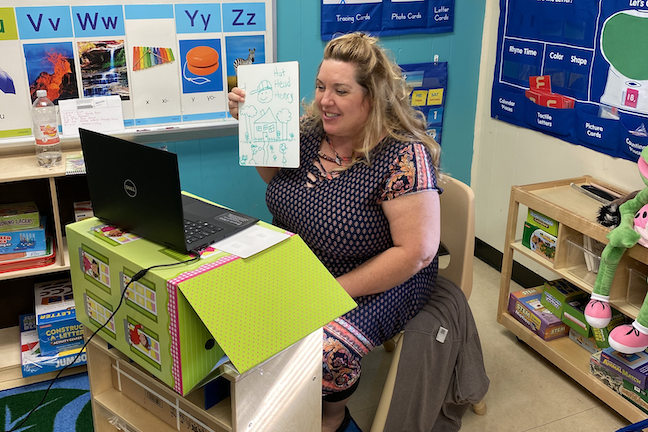
Three takeaways stand out for Bastrop ISD educator Jennifer Greene Gast from the big digital shifts her district has made since the COVID outbreak.
First, educators must tailor new online platforms to each student and family’s needs, says Greene, the academic Response to Intervention coordinator for the district, which gone from 25% in-person capacity to 75% during the course of the school year.
The district narrowed the number on online learning management systems so parents with multiple children had fewer new tools to learn. Some platforms also feature videos to help parents use the features.
Next, educators must also celebrate the “small wins” during the pandemic. For example, administrators at Bastrop ISD—one of the the largest geographically in Texas—gave themselves a pat on the back for distributing computers and hotspots to all its families.
From DA’s FETC: What are the coolest—and healthiest—new ed-tech tools?
The district also mails out rewards—such as gift cards—when students reach certain benchmarks. Teachers also reward students by letting them create Spotify playlists that are played during morning meetings.
Finally, administrators have prioritized “just in-time” professional development and tech support for teachers as they adopt new platforms and programs, Gast says.
Online learning innovations
These takeaways have, in turn, led to some innovations that will remain a key part of education in Bastrop ISD as districts across the nation emerge from the pandemic.
“Teachers have really learned to think outside the box as far using the technology we have,” Gast says. “They don’t see online learning as just a station, they have integrated it into their direct teaching, they have integrated it into academic conversations.”

One challenge, however, has been that students using Wi-Fi hotspots have had trouble connect to some video-heavy platforms that require more bandwidth.
Teachers also will continue using the flipped classroom approach that has been a hallmark of instruction during COVID.
More from DA: How to keep all hybrid learners invested in your lessons
Bastrop ISD’s educators now have students watch videos to preview concepts that will then become the topics of class discussions and labs.
“I’m hoping that means the 45-minute lecture will go away,” Gast says.
The online environment has also required the teachers to put more time into solidifying relationships with students.
Teachers can use online breakout rooms to work with individual students or small groups. Bastrop ISD also offers an online Saturday session when any student can log on to get additional help.
Teachers have also detected higher online student engagement in the morning. Initially, teachers who offered lessons and then gave students asynchronous assignments found that students didn’t log back in during the afternoon.
Teachers have now concentrated synchronous lessons during the morning and assign videos for the afternoon, Gast says.
“Kids are amazing if we let them take ownership of the learning,” she says. “We need to trust they have the ability to use the programs because they’re the digital natives. We’re the ones who are not quite comfo with the technology still.”







